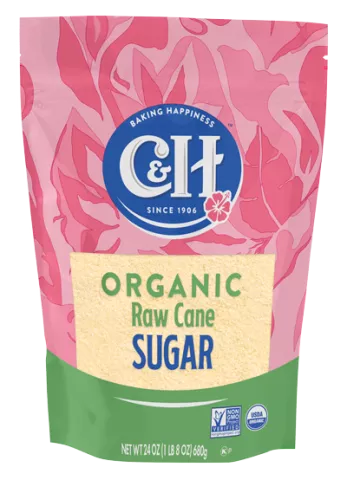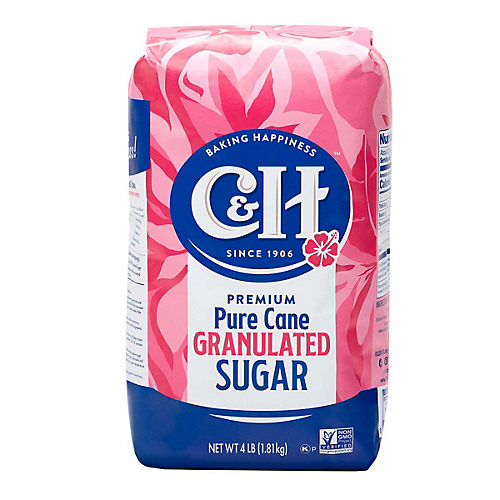Cane Sugar Processing: From Area to Table-- A Step-by-Step Overview
Wiki Article
An Extensive Guide to the Environmental Impact and Sustainability Practices in Cane Sugar Handling
The environmental influence of walking stick sugar handling offers a complex range of difficulties that warrant careful examination. From soil degradation and extreme water use to the carbon footprint linked with cultivation and production, the consequences of traditional methods are far-ranging. What particular methods can be implemented to strike a balance between productivity and ecological stewardship?Introduction of Walking Cane Sugar Processing
Walking cane sugar processing involves a collection of methodical steps that transform sugarcane right into polished sugar. Initially, gathered sugarcane is delivered to refining centers, where it undertakes cleaning to eliminate dirt and debris. Following this, the walking stick is crushed to extract juice, which is then clarified by removing contaminations through home heating and the enhancement of lime.The cleared up juice undertakes evaporation, where water is gotten rid of to focus the sugar content. These crystals are separated from the remaining syrup making use of centrifugation, resulting in raw sugar.
The last product is then dried out and packaged for distribution. Throughout this whole process, keeping efficiency and quality assurance is vital to guarantee the sugar meets sector requirements. Each action in walking cane sugar processing not only adds to the end product but also has ramifications for resource usage and waste generation, establishing the stage for conversations on sustainability and environmental effects related to sugar manufacturing.
Environmental Challenges of Production
The production of walking cane sugar offers a number of considerable environmental obstacles that warrant focus. One primary concern is the considerable use agrochemicals, including fertilizers and chemicals, which can bring about dirt degradation, biodiversity loss, and contamination of regional water sources. The drainage from sugarcane fields usually lugs these chemicals right into nearby communities, interrupting aquatic life and affecting the health and wellness of neighborhoods reliant on these water bodies.One more obstacle is the high power consumption related to sugarcane handling. The boiling and refining stages require substantial warmth, largely created by shedding nonrenewable fuel sources, adding to greenhouse gas emissions. Furthermore, the large land area needed for sugarcane cultivation can result in logging and habitat devastation, more aggravating environment change and threatening wildlife.
Furthermore, the labor techniques in some areas elevate ethical worries, as workers might deal with inadequate working problems and insufficient wages. This situation often continues a cycle of poverty in neighborhood areas. Cane Sugar Processing. Resolving these ecological obstacles is important for creating much more sustainable practices in walking cane sugar manufacturing, inevitably profiting both the setting and the areas entailed in this industry
Water and Land Usage Influence
Water resources and land utilization are essential parts in the walking stick sugar industry that significantly impact the atmosphere. The farming of sugarcane needs considerable water input, with estimates suggesting that it can take in approximately 2,000 litres of water per kg of sugar generated. This extensive use water usually results in deficiency of regional water resources, impacting not just the sugarcane vineyards however additionally bordering ecological communities and areas that rely upon the very same water sources for agriculture and residential use.
Moreover, land usage for sugarcane growing can result in logging and the conversion of natural habitats right into monoculture haciendas. This technique decreases biodiversity, interferes with neighborhood ecosystems, and adds to soil degradation. The growth of sugarcane areas commonly you can look here elbows in on useful agricultural land, developing competition for resources between food and biofuel manufacturing.
Sustainable techniques, such as enhancing irrigation methods and carrying out crop rotation, are vital to minimize these influences. By adopting a lot more reliable water use and land monitoring methods, the walking cane sugar sector can reduce its ecological footprint, guaranteeing a balance between agricultural productivity and environmental preservation.
Greenhouse Gas Emissions
Greenhouse gas emissions represent a substantial environmental issue within the walking stick sugar handling industry, especially as agricultural techniques increase to fulfill international demand. The growing of sugarcane, a plant that grows in exotic environments, counts greatly on synthetic plant foods and chemicals, which add to nitrous oxide emissions. Additionally, land-use changes, including deforestation for new sugarcane ranches, release co2 stored in vegetation and soil.During processing, power consumption is one more major source of greenhouse gas emissions - Cane Sugar Processing. Numerous sugar mills make use of fossil fuels to power machinery and generate warmth, leading to considerable carbon footprints. Furthermore, the transportation of raw sugarcane and completed items includes layers of exhausts via fuel combustion in cars
This involves evaluating existing farming practices, navigate to these guys processing techniques, and transportation systems to identify areas for improvement and mitigation. Resolving greenhouse gas discharges is necessary for promoting a much more lasting walking cane sugar industry in an altering climate.

Sustainable Practices and Innovations
Sustainable practices and developments are progressively essential in the cane sugar handling market as stakeholders look for to decrease ecological impacts while preserving productivity. One considerable development is the execution of incorporated plant administration, which maximizes resource use by combining soil monitoring, pest control, and plant turning methods. This approach boosts yield while lessening chemical inputs and preserving soil health and wellness.Furthermore, the fostering of renewable resource resources, such as biomass from sugarcane residues, has actually gained grip - Cane Sugar Processing. By transforming waste items right into power, processing facilities can decrease their dependence on fossil fuels, consequently lowering greenhouse gas discharges
Water monitoring techniques have actually likewise seen improvements through the recycling and reusing of water in handling plants, significantly reducing freshwater consumption. Advancements in modern technology, such as precision farming, enable farmers to keep an eye on plant health and source usage better, guaranteeing sustainable cultivation practices.
Moreover, certification programs like Fair Trade and Jungle Partnership encourage ecologically accountable farming techniques and advertise social equity within the supply chain. By accepting these lasting techniques and innovations, the walking stick sugar handling industry can improve its durability and contribute favorably to environmental stewardship.
Verdict
The ecological effect of walking cane sugar handling provides significant challenges, including soil destruction, high water look at here intake, and greenhouse gas exhausts, alongside moral issues connected to labor methods. Addressing these issues with sustainable practices, such as integrated plant monitoring, sustainable energy adoption, and water recycling, is important. By promoting socially equitable and environmentally liable approaches in sugar production, the sector can alleviate its negative results, guaranteeing an extra sustainable future for both environments and neighborhoods entailed in this field.Cane sugar processing involves a collection of methodical actions that change sugarcane right into refined sugar. Each action in cane sugar processing not just contributes to the last product but also has effects for source usage and waste generation, setting the stage for conversations on sustainability and ecological impacts connected with sugar manufacturing.
Greenhouse gas discharges represent a substantial environmental problem within the walking cane sugar processing sector, especially as farming practices expand to fulfill global demand.Lasting techniques and innovations are progressively vital in the cane sugar handling sector as stakeholders seek to lower ecological effects while keeping productivity.The ecological impact of walking stick sugar handling offers significant challenges, including dirt degradation, high water intake, and greenhouse gas discharges, alongside honest problems associated to labor techniques.
Report this wiki page